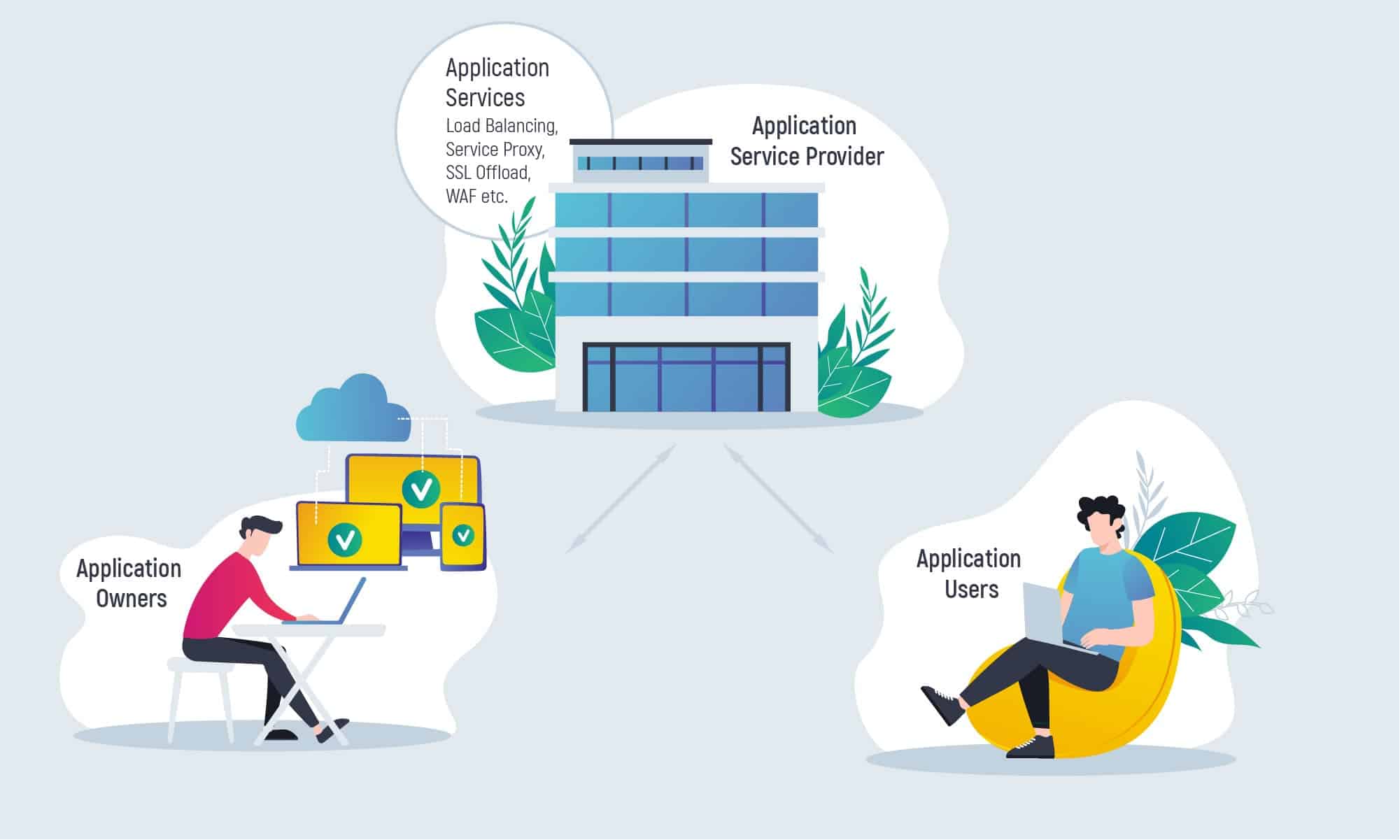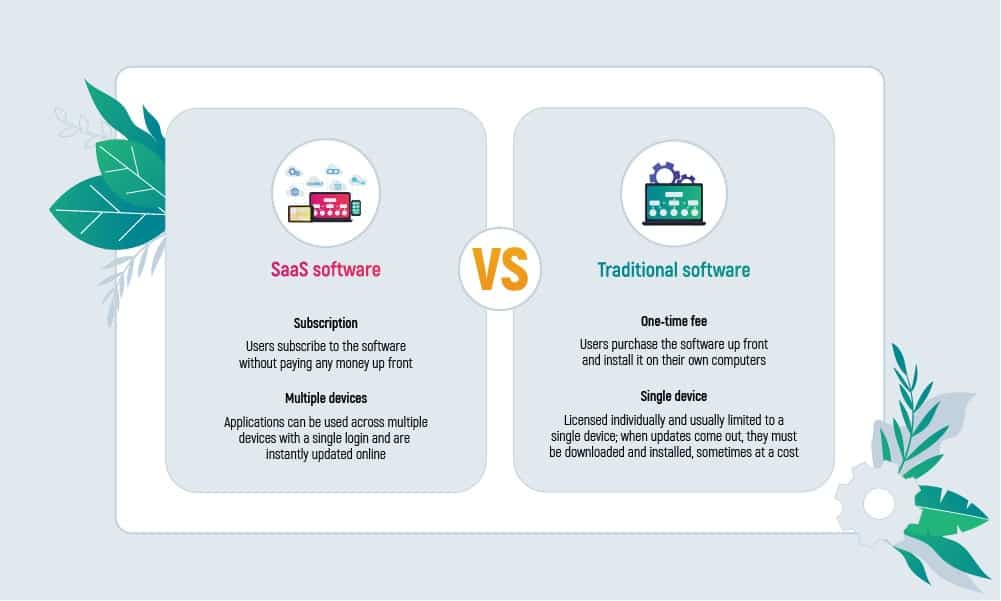A lot of us are familiar with the world-famous SaaS applications. Moreover, we are using them in personal life and at work daily. Not knowing that these are examples of software as a service model.
Software as a Service (SaaS) is a new approach that is extending rapidly and affecting different industries. Service providers, small companies, and large enterprises use this model to boost their performance and get easily predictable income.
The total size of the cloud Software as a Service worldwide market reached the level of $157 million in a year ago and is expected to reach 166.8 billion U.S. dollars in 2024.
Let’s dive in and discover what SaaS means, how to create a SaaS application, and what are the steps to do so.
- Building SaaS Applications: Facts and Benefits
- What is a SaaS platform?
- The benefits of using SaaS web app
- Types of SaaS Applications
- How to develop a SaaS application
- Deep dive
- Business plan
- Technical vision
- Basic SaaS app features
- How to create a SaaS application
- Consider Inoxoft Your Trusted Partner
- Final Thoughts
Building SaaS Applications: Facts and Benefits
What is a SaaS platform?
SaaS stands for software as a service and generally speaking it is a new method for delivering software applications over the internet via a subscription model. This is a game-changer compared to the traditional software model where users have to manage, install, and constantly update the software themselves on computers or local servers.
Back in the day, all the features on your computer used to be installed on local servers and use a client-server window to get access to the servers. Nobody even thought about how to build software as a service. Probably you didn’t notice but for instance, financial institutions used to have terminals with black screens and texts and they would hit the F1 button because that computer was connected to a more powerful server.
The companies had to buy servers, and software from their creators, then install them in a server room, set them up, and get people to access the server, and only after such a long process people could work: with the accounting, the management, and so on.
What changed now in the delivery approach is that it started using the internet to get access to these applications instead of the local network. Now in the middle, there is an ASP (application service provider), that works in case the company doesn’t want to invest millions in servers and software licenses, so they just pay another company to host it all for them. And then they charge for subscribing to it (usually they pay only for the amount of usage).
The benefits of using SaaS web app
SaaS solutions can positively affect your business. Here is why:
- Cost efficiency
A cloud service provider would be maintaining and managing the application for you. And SaaS application is typically consumed on a subscription-based model which is either on an annual basis or a monthly basis. There’s no need to buy and maintain expensive hardware, and you only pay for the resources your app uses.
- Scalability
Users pay only for services they receive. If something needs to be changed, just switch the subscription plan.
- Security
Cloud service providers ensure the security to the data that is stored on their servers.
- Reliability
SaaS is a cloud-based solution. So, it has its system of servers located in different places, which prevents an application from falling.
- Accessibility
Users always have access to the latest version of such applications and can use them on every device in any part of the world.
- Updates
Users don’t need to update, install and receive annoying notifications about the latest version of a specific service. All the up-to-date versions are already there.
- Bigger customers base
Following lower costs and trial periods, applications attract a lot of potential users.
Types of SaaS Applications
There are a few types of cloud-based SaaS applications.
- Customer relationship management software (CRM) – is an efficient tool for management. It automates sales and marketing processes, stores all customers’ data, and helps improve user experience.
- Enterprise resource planning software (ERP), is mainly used by business giants to manage a variety of operational processes such as budgeting, forecasting (in some cases), risk management, etc.
- eCommerce software and CMS – a great tool to save money on website development but sell your products in any way. It covers product management and payment integrations (e.g. Shopify)
- Communication platforms are mostly used as internal communication tools within companies. (e.g. Slack)
- Project management software, which aids PMs in collaborating with their teams eg. Jira or Workflow
- HR/HRM solutions that manage human resources within the organization. They can include a variety of features such as data storing, performance tracking, recruiting, productivity management, etc.
Still, thinking about how to create a saas platform? Keep up with us and soon we will share a top-notch SaaS web application we’ve already had a chance to implement.
An example of this model application in the B2C segment is Google Docs. You get the functionality of a text editor but there is no need to specifically install the program on a computer and use only a browser.
Another well-known example of SaaS product is Google Drive. It is a cloud-based platform that allows you to store files on its servers, share them with other accounts and synchronize across all your devices.
Other prominent SaaS applications include:
How to develop a SaaS application
There is no doubt that it is a challenging and complex process to create a SaaS application from scratch. Here are a few steps you should take into consideration to make the SaaS development process smoother.
Deep dive
Market research is an essential part of any business idea and not just in building SaaS applications. Not only to define the latest trends, but more important requirements, and competitors. If you have a unique business idea but still have difficulties crystallizing it, take advantage of the discovery phase services our team will perform for you. Our business analysts, software engineers, and UI/UX designers will provide you with a detailed report on your product, and identify challenges, risks, and product feasibility.
Business plan
In case you don’t want to act spontaneously and wish to avoid unnecessary mistakes (including extra time, costs, and efforts), strategy preparation sounds like a plan. The key aspects that you should go through in your road map:
- Set a budget
- Define monetization strategy
- Collect project requirements
Technical vision
The technology stack is a list of the programming languages, frameworks, and tools used in software development. Defining the best stack for desired functionality is another crucial step. The tech stack is divided into two different sides: the front end and the back end.
- The front end refers to everything the user can see on the screen. The front-end technologies include HTML, CSS, JavaScript, frameworks, and libraries.
- The back end refers to the part for developers and includes frameworks (Node.js, React.js), programming languages (JavaScript CSS), operating systems, databases, and servers.
Also, to build a cloud-based SaaS app it’s necessary a database for back-end data storage. MySQL and PostgreSQL are the two acceptable databases.
Last but not least is to choose a reliable provider. Amazon Web Services (AWS), for instance, offers a bunch of cool tools for SaaS developers. And it’s architecture is a reliable service for cloud software maintenance.
Basic SaaS app features
Important requirements regarding effective support of different payment systems, secure cloud hosting services, data analysis tools, and risk management, are the advantages you provide to the target audience. We have no idea how to develop a SaaS product without these crucial elements:
- Focus on security
Storing customers’ data in the cloud, and integrating with any third party brings potential security risks. You have to ensure that sensitive user data is encrypted against the threat of leakage and hack attacks. It includes multi-factor authentication, identity management, etc.
- Authentication
An easy, but reliable authentication process gives an impression of a secure platform. The app can support access from numerous accounts with two-factor authentication. Or access activated via email, phone number, etc.
- UI/UX
How to build a SaaS app without paying attention to UI/UX. It’s more convenient to make your application user-friendly and easy to use and appealing to the end user. Who needs complicated navigation or an old-school design in 2021?
- Frequent updates
To keep up with competitors and remain successful in the market, updating your SaaS app regularly is a must.
- User activity monitoring
Analyzing users’ logs allows for predicting changes, tracking changes, and preventing intrusion. It plays a huge role in data protection and dealing with integrity and access issues.
- Define an MVP
Minimum viable product development is a feature-limited version of your SaaS application that offers enough functionality to users so that they provide valuable insights. It is often considered as a safe boat, because of the ability to check your idea on feasibility.
The benefits of launching an MVP before the development phase are
- In providing valuable information on usability, functionality, and user experience by collecting and analyzing feedback from test groups.
- In reducing additional expenses Developing an MVP is a tool to prevent spontaneous costs during the development process.
- In trying different concepts to measure the effectiveness of business models.
Find out what are the best SaaS development companies in the USA!
How to create a SaaS application
The pricing of creating a Saas application like any other software depends on the product itself: its features, complexity, technology stack, integrations with third parties, and whether it is going to be cross-platform. Also, the costs vary on the type of app, the industry. Simple web apps, progressive web apps, and native apps require a second thought as with implementing features and add-ons the cost of each type will differ significantly.
Don’t hesitate to use our App Cost Calculator to check the approximate cost of your potential application.
Consider Inoxoft Your Trusted Partner
Inoxoft is an international software development company that offers custom web application development and mobile application development services to build a SaaS application. Also, we propose our UI/UX development services to enhance the user experience using a seamless design. Our team provides clients with expert solutions in various industries and a variety of technologies. For instance, to build one of the world’s finest SaaS applications, our node.js development company uses the latest technologies, among which you can choose our react.js development services.
So, as we promised earlier, we want to share with you our relevant experience in developing software as a service application or to be specific, a Scalable Platform for Data-Driven HR & Consultancy Services.
Our client is a Netherlands-based company experienced in providing HR consultancies that make personnel management systems for enterprises. The initial business idea was to create a platform that allows other companies to avoid employees quitting and achieve maximum satisfaction. This encouraged the client to automate the process of consultations. Web application components aimed to help HR experts to manage the system of questionnaires and measure results. Through a mobile app, employees could respond to questions and keep in touch with consultants, company leaders, and coworkers.
Inoxoft team delivered the SaaS solution that consists of a web application and a cross-platform mobile app. The web was created to manage and provide HR services that are managed in the form of custom questionnaires, talent analysis, and individual feedback.
Mobile apps are for employees who connect the system, respond to questions, and get feedback on their results from the HR team. So, Inoxoft’s engineers produced an on-demand web and mobile application that allows:
- Each organization has its database in the system
- Opportunity to create custom questions and schedule them for each employee
- A transparent system of accessing users’ results and managing permissions
- Convenient feed page with prioritized questions by date
- Possibility to chat and send tips, compliments, or complaints to people
If you are interested in knowing how to build a SaaS product, contact our team to get more details and insights from our experience.
Final Thoughts
The SaaS model has quickly grown in popularity due to the benefits it offers to users, application developers, and business owners. Follow our guide on how to make a SaaS application to provide convenient services to your clients.
Looking for a development team that knows exactly how to create a SaaS product. We can scale your team or create cutting-edge custom solutions for you.
Frequently Asked Questions
How to develop a saas application?
To deliver a SaaS app, research the market, create a business plan, Pick the technical stack and key functionality, and don’t underestimate the value an MVP will bring your project. Read the full article to discover more details.
How much does it cost to develop a SaaS application?
The final cost of building a SaaS app varies depending on the different factors:
- The complexity of features
- Hiring options (outsourcing/ outstaffing)
- The team’s hourly rates
You can check the approximate price of your possible app by using our service App Cost Calculator.










